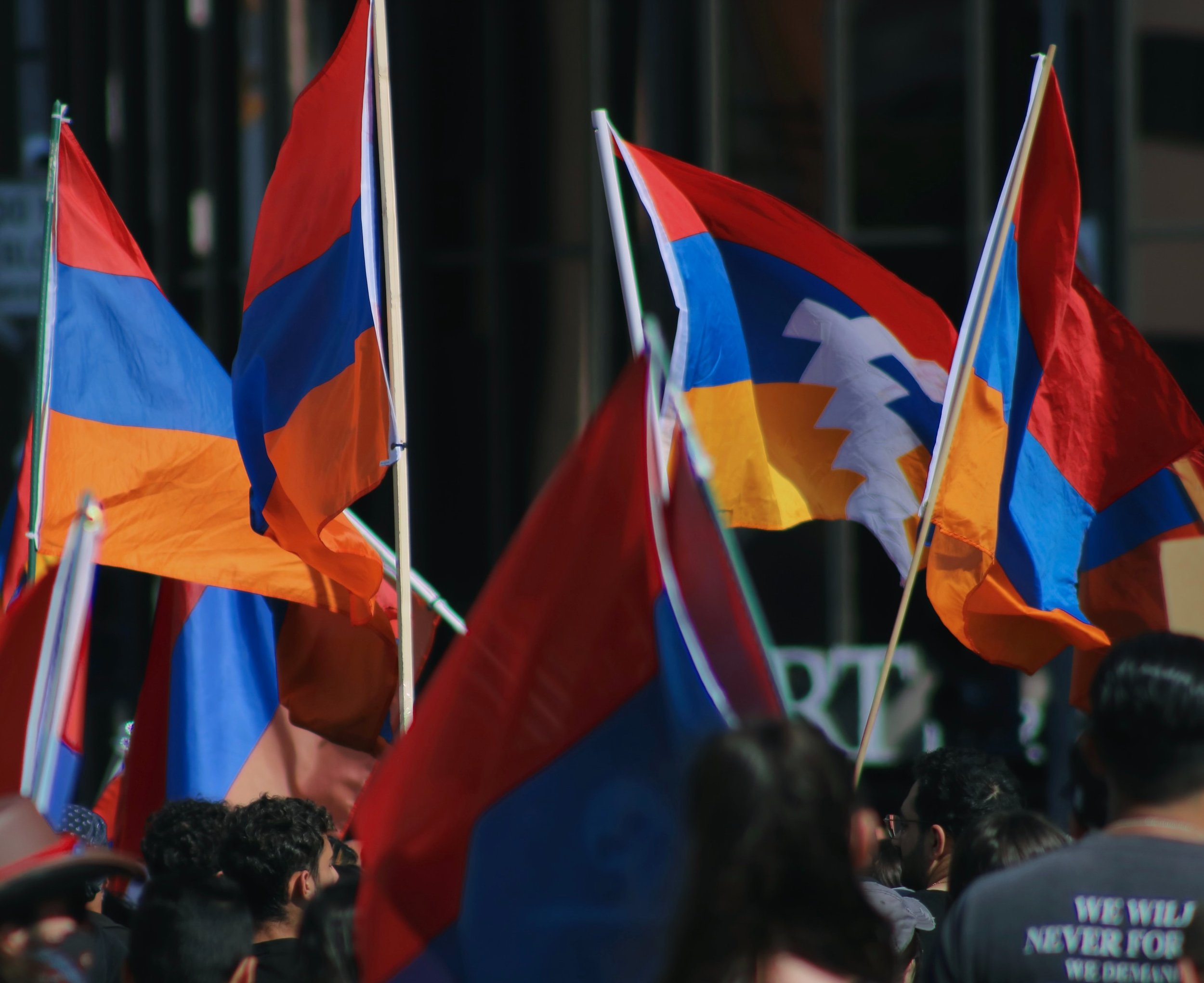Armenian Genocide Remembrance Day: A Never-Ending Story
Peaceful protesters raising awareness of the Armenian Genocide
Photo by Edgar Torabyan on Unsplash
April 24, 1915: The first day of the Armenian Genocide. 1.5 million Armenians were murdered. The Armenian stories of dignity preservation and strength are never-ending, as they have been survivors of genocide and persecution since the beginning of their existence.
According to History.com, The Ottoman Turkish government officials began to round up and slaughter several hundred Armenian intellectuals. As the new Muslim government, known as the Young Turks, rose to power in 1908, the tolerance for ethnic Christian minorities like Armenians, Greeks and Assyrians progressively decreased.
The mission then became to “Turkify” the region and Armenians continued to pose obstacles and threats to the empire of deceit. In 1914, the Ottoman Empire had entered WWI on the side of Germany and the Austro Hungarian Empire. While the world was distracted by the war, Ottoman religious authorities had declared a holy war against all Christians, except those with alliances.
Slowly, the Ottoman officials began to raid Armenian households to forcibly remove them from their homes. They were then sent on death marches to the Mesopotamian desert without food or water. The marchers were stripped naked, forced to walk under the scorching sun, raped, and tortured until they died. Still, those who somehow survived the starvation and brutality were shot and killed.
Turkish officers and members of Ottoman killing squads oftentimes referred to these acts of persecution as “the liquidation of Christian elements.” The littering of Armenian corpses throughout Anatolia continued with the drowning of Armenians in rivers, throwing them off cliffs, crucifying them and burning them alive. Records show that children under five years old were taken from their families, converted to Islam and given new identities as Turks.
Of the two million Armenians in the Ottoman Empire at the time, 380,000 were able to climb their way out of ethnic annihilation and survive. The fight for survival continued as the last ones standing were divided and dispersed throughout the Middle East and Europe, initiating the growth of the Armenian diaspora. The only appropriate term to describe these systematic, mass murders the Armenian people is genocide, coined by Polish-Jewish lawyer Raphael Lemkin in 1944, which translates to the killing of a race or tribe.
However, the perpetrators of these crimes against humanity, the Ottoman and current Turkish government have failed to tell the truth. Turkey has attempted to erase history with the concealing of files and the silencing of outside journalists to this day.
Still, scholars are fighting against such suppression of genocides. Marist College hosted a Armenian Genocide Remembrance and Heritage Event on April 12, 2023. It was organized by Iris Ruiz-Grech from the Center for Multicultural Affairs, Professors Steven Garabedian and Dr. Michael O’Sullivan to commemorate the forgotten Armenian lives lost. They explored the tactics used to spread Armenophobia throughout the empire, and how Turkish denialism has been a key factor in the lack of awareness of the Armenian struggle for survival.
O’Sullivan notes the Armenian genocide of 1915 as “a very extreme case of denialism—a refusal to talk about the past.”
“The lesson that many Armenians learn is that they have to take justice into their own hands,” O’Sullivan said. “I want to emphasize that the Armenian stories of resilience are never-ending.”
In 2020, Azerbaijan, a neighboring Turkic nation launched a full-scale military aggression, targeting a region known as Nagorno-Karabakh, 95% populated by ethnic Armenians. Azerbaijan closed their borders and cut social media access to alter the narrative to its people.
Thousands of native Armenians have been and currently are being killed. However, American media continues to describe the war as a “conflict.” This is not a conflict—this is a fight for survival that continues to be ignored. The gradual conquering of the lands of native people is a recurring story. We see this happening in Ukraine and many other places around the world today. Yet, the media around the world continually chooses to ignore the struggles of the Armenians because it is not profitable.
Garabedian concluded his presentation with a quote from William Saroyan that embodies the Armenian resilience and culture that goes unnoticed: “Go ahead—destroy Armenia. See if you can do it. Send them into the desert without bread or water. Burn their homes and churches. Then see if they will not laugh, sing, and pray again. For when two of them meet anywhere in the world, see if they will not create a new Armenia.”
